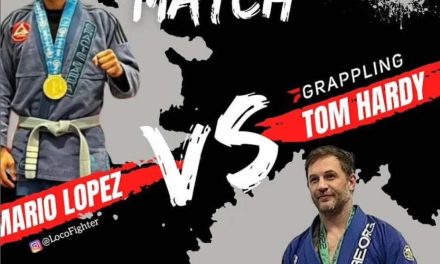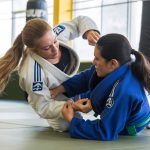Andrew Wiltse, a BJJ black belt, has gained popularity in recent years for his impressive grappling skills in the sport of Brazilian Jiu-Jitsu. However, in a recent video, Wiltse spoke about the limitations of BJJ in real-life street fights. He emphasized that while BJJ can be a valuable tool in self-defense, it is not a foolproof solution for all situations.
Wiltse’s comments are particularly relevant in today’s world, where violence and crime are on the rise. Many people are turning to martial arts and combat sports as a means of self-defense, and BJJ is one of the most popular choices. However, as Wiltse points out, there are several factors that come into play in a real-life street fight that are not present in a controlled BJJ match.
One of the most significant differences between BJJ and street fights is the presence of multiple opponents. In BJJ, the goal is to submit a single opponent using grappling techniques. However, in a street fight, there may be multiple attackers, making it difficult to use BJJ effectively. Wiltse suggests that training with a partner who can simulate multiple opponents can be helpful in preparing for this scenario.
Another factor to consider is the environment. In a BJJ match, the ground is typically clean and free of obstacles. However, in a street fight, the ground may be uneven, and there may be obstacles such as curbs, rocks, or broken glass. Wiltse suggests incorporating training in such environments to prepare for the unpredictable nature of a real-life street fight.
The use of weapons is another factor that can make a street fight more dangerous than a BJJ match. In BJJ, the use of weapons is strictly prohibited. However, in a street fight, an opponent may be armed with a knife, gun, or other weapon. Wiltse suggests that training in weapon defense can be helpful in preparing for this scenario.
Wiltse also emphasizes the importance of striking techniques in a street fight. While BJJ is effective in grappling situations, striking can be crucial in a street fight where the opponent may be standing or using weapons. Wiltse suggests incorporating training in striking techniques such as boxing, kickboxing, or Muay Thai to prepare for this scenario.
Finally, Wiltse recommends adding another martial art to one’s BJJ game to prepare for a variety of situations. For example, training in wrestling can be helpful in improving takedowns and defending against them. Training in judo can be helpful in improving throws and sweeps. By adding another martial art to one’s BJJ game, one can be better prepared for a variety of situations that may arise in a real-life street fight.
Despite the preparation, Wiltse warns that nothing goes as planned during a real street fight. He emphasizes that getting hurt is inevitable in such situations. Therefore, it is essential to train and prepare as much as possible to increase one’s chances of survival.
In recent years, there has been a growing interest in self-defense and martial arts, and BJJ has become one of the most popular choices. However, as Wiltse points out, BJJ alone may not be enough to protect oneself in a real-life street fight. It is essential to consider other factors such as multiple opponents, the environment, and the use of weapons.
Training with a partner who can simulate these scenarios, incorporating striking techniques, training in weapon defense, and adding another martial art to one’s BJJ game can all be helpful in preparing for a street fight. However, it is important to remember that nothing can fully prepare one for the unpredictable nature of a real-life street fight.
In conclusion, Andrew Wiltse’s insights on the use of BJJ in street fights provide valuable advice for those looking to protect themselves. While BJJ can be effective in grappling situations, it is important to consider other factors that may be present in a street fight. By training and preparing as much as possible, one can increase their chances of survival in a real-life street fight.
Check out his video here:







